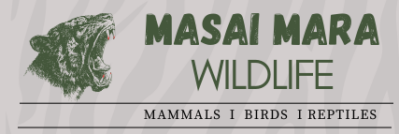Size and Appearance
- Size:
- Head-Body Length (HBT): 240 cm (95 inches)
- Shoulder Height (SH): 85 cm (34 inches)
- Recognition: Cheetahs are streamlined and built for speed, with a slim, long-legged frame and a small, rounded head. Their sandy-colored coat is heavily spotted, and their distinctive facial markings, known as “tear lines,” run from the eyes down to the mouth, helping reduce glare from the sun. The tail, essential for balance during high-speed chases, has 4–6 dark bands and a white tip.
Habits and Behavior
- Activity: Cheetahs are primarily diurnal, meaning they are most active during the day, often hunting in the morning or late afternoon. While males may patrol their territory at night, cheetahs generally avoid nocturnal activity to steer clear of more powerful predators like lions and hyenas.
- Speed: Renowned as the fastest land animal, cheetahs can reach speeds of over 112 km/h (70 mph) in short bursts. They can accelerate from 0 to 100 km/h (0 to 60 mph) in just three seconds, giving them the edge in high-speed chases.
Habitat
- Where to Find: Cheetahs are most commonly found on the open plains and savannas of the Masai Mara, where the lack of dense vegetation allows them to spot prey from a distance. They are often seen perched on termite mounds or even safari vehicles to get a better view of the terrain.
Diet and Hunting
- Diet: Cheetahs primarily prey on smaller, faster animals such as Thomson’s Gazelle and hares, but they can also take down larger animals like wildebeest, topi, or zebras when hunting in groups. Their hunting strategy relies on stealth and speed, stalking prey to within 30 meters (100 feet) before launching into a high-speed chase.
- Hunting Technique: During the chase, a cheetah’s large nostrils allow increased air intake, and their long tail helps them maintain balance while pursuing the zig-zagging movements of their prey. Once they catch up, the cheetah typically trips the prey before delivering a chokehold to the throat.
Challenges and Predators
- Vulnerability: Despite their impressive speed, cheetahs are physically delicate compared to other big cats. They are highly vulnerable to scavengers and predators like lions and hyenas, often abandoning their kill to avoid injury. Cheetahs depend on speed and stealth to avoid confrontations with larger predators.
Social Structure
- Females: Female cheetahs lead a largely solitary life once they reach maturity, except when raising cubs. Their territory may overlap with that of several males, but they avoid interaction unless mating.
- Males: Male cheetahs often form coalitions, usually between brothers, to increase their success in defending territories and hunting. These coalitions may also enable them to take down larger prey, but the coalition typically breaks up if one male dies or is significantly injured.
Reproduction
- Gestation and Cubs: Cheetahs have a gestation period of 13–14 weeks, giving birth to litters of 3–6 cubs. Cubs are born with spots and a downy, greyish coat, which they lose as they grow older. Mortality rates are high for cheetah cubs, with many falling victim to predation by lions, hyenas, and even eagles. However, by six months, surviving cubs are strong enough to follow their mother on hunts and are safer from predators.
Unique Traits and Challenges
- Genetic Bottleneck: Cheetahs have low genetic variability due to a historical event known as a genetic bottleneck, which occurred around 10,000-12,000 years ago. This has led to various health issues and makes the species more vulnerable to diseases and environmental changes.
- Communication: Unlike other big cats, cheetahs cannot roar but communicate through purring and bird-like “chirps.” These chirps help them locate one another, while loud hisses are used in moments of danger.
Cheetah Conservation in the Masai Mara
Cheetah populations in the Masai Mara are closely monitored by programs like the Mara Predator Conservation Program, as the species faces threats from habitat loss, human-wildlife conflict, and competition with larger predators. The program actively tracks cheetah movements and behavior to help understand population trends and ensure their long-term survival in the ecosystem

Hi, this is a comment.
To get started with moderating, editing, and deleting comments, please visit the Comments screen in the dashboard.
Commenter avatars come from Gravatar.